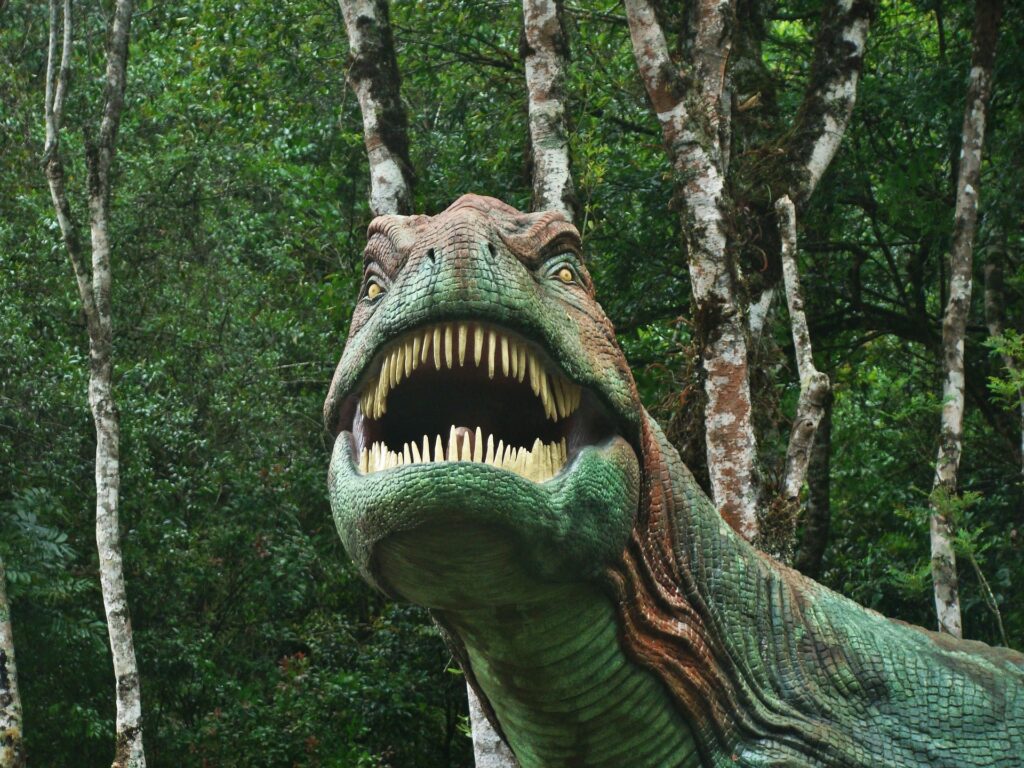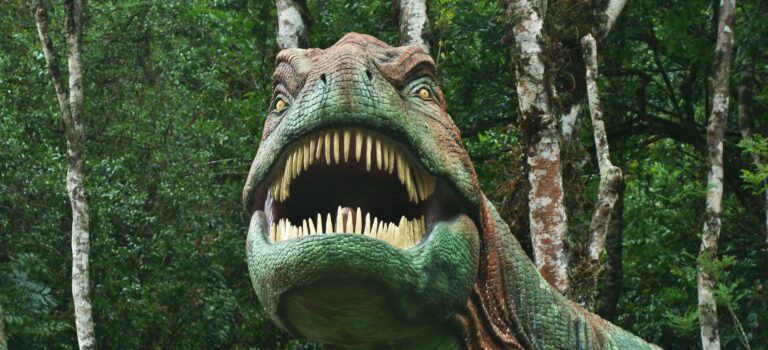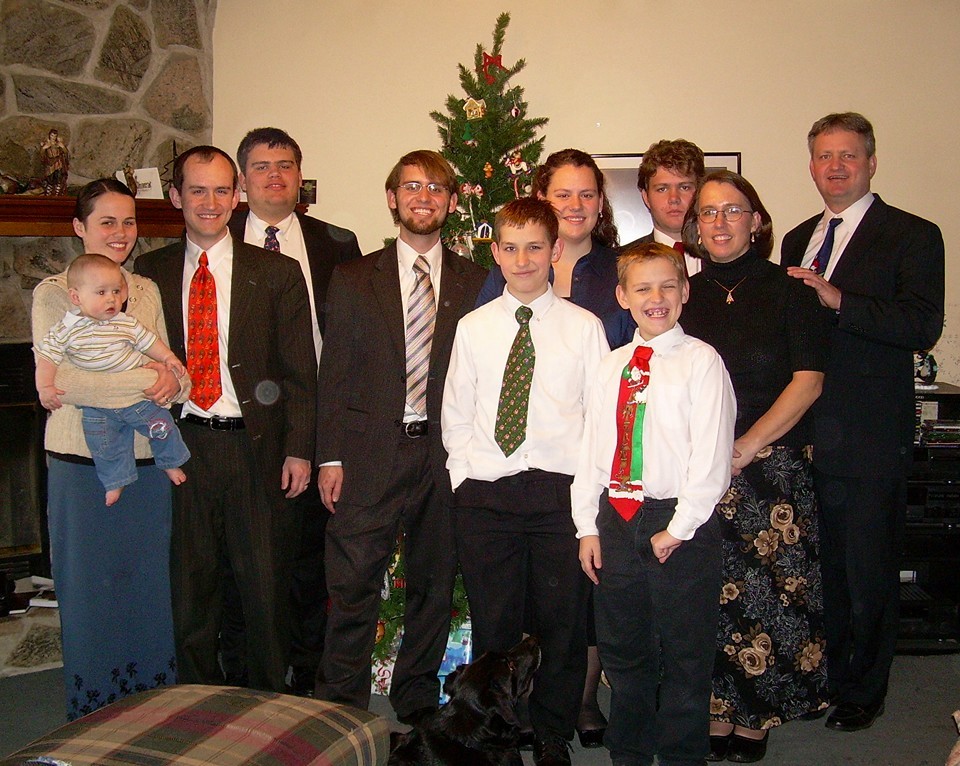
At seven years old, I was dinosaur-obsessed. I watched educational dinosaur specials on VHS, and I knew all their names. I visited their bones and models at the Milwaukee Public Museum. I loved their gruesome display of a T-Rex eating a ceratopsian, guts and all.
But I had never actually seen a dinosaur, you know, eat a person.
Not until one glorious summer night in 1993 when, in his infinite wisdom, my father decided to bring pint-sized, pigtailed me to see one of the first theatrical showings of Steven Spielberg’s Jurassic Park. The film was based on Michael Crichton’s novel of the same name.
The lights went down, and thrilling carnage ensued. I was transfixed, terrified, and fascinated. When we stopped at the gas station to fill up on our way home after the show, I was still shaking. I also begged to see the movie again as soon as possible.
That summer, I wanted to be Dr. Ellie Sattler more than anything in life. Like my idol, I had an intense curiosity about the world around me. I wanted to touch it. I wanted to study it. But I also feared it and knew it could hurt me. Not only were my beloved cinematic velociraptors unbelievably awesome, they were also hideous and deadly. They were the manifestation of the unique awe that comes from an acknowledgement of human frailty. A shrieking animatronic memento mori, if you will.
After Jurassic Park broke my brain, I developed an all-consuming love for creatures that I feared. In literature and film, I looked for them wherever I could. The monster could assume so many different forms, from killer sharks to city-smashing gorillas, to the mutants and aliens of science fiction. Monsters could even be humans who had become monstrous through their curiosity (like Dr. Jekyll or The Hulk) or through no fault of their own (like Frankenstein’s monster or Grendel). Speaking skeletons and murderous squids danced in my daydreams. They still do. In my fiction, they always find their way forward. And I’m not alone. It delights me how every year I inevitably get a new infusion of monster-centric fiction to read and films to see. These genre titles are often billed as less serious literature, but I couldn’t disagree more.
When I think about monsters, I think about the magic of fear. As we learn to navigate the world, most of us stop looking for fairies beneath toadstools and give up on the hope that we might stumble into a portal to a fantasy realm. But fear is something that we all believe in. It comes from outside of us and inside of us, no matter how old we get. That’s part of the human condition, and it’s an invisible wraith that haunts our worries. But when we can entertain fear in the form of a monster, it’s a terror laden with relief.
The monster allows human imagination to give fear a shape. It’s a way to see threat in detail, with its teeth and beauty and power and scales. It demands a certain kind of reverence and reminds us that, yes, sometimes we have to reach our hands out to touch our fears on their terrible snouts. And while that can be frightening, it can also be life-affirming. Strangeness, self-discovery, transformation: these things require facing the demons that we all have. The only difference in a monster story is that they are actual demons.
Not all monsters are bad, and that’s one of my favorite things about them. At the end of the story, as much as we cheer for the efforts to fire arrows at the monster or evade their snapping teeth, we really don’t want to see the monster die, because we know that the monster is a part of us, too. By othering it we deny that truth.
We see the monster as the threat of the possible, the danger of the unknown. Sometimes monsters are monstrous merely because they are strange: bizarre, unnatural, unholy. Monster stories have the courage to ask, What happens when we meet our fears? Where does the real danger lie? What’s the real difference between the monster and ourselves? Whether organic, robotic, or supernatural, all monsters are interlopers, crossing into the field of human interaction without permission or sometimes even definition.
To be human is to fear. To be a monster is to be the thing that is feared. At our most powerful and pure, we can recognize our own monstrosity and allow it to companion with virtue. The Romantics knew this well. For them, the most divine of emotions was sublimity–witnessing something peerless in beauty and unbounded force. It’s the reverence that compelled Shelley to write Frankenstein and play her part in the invention of science fiction.
That’s why, in one of the final frames of Jurassic Park, the scene that still pricks me with chills is this: as the humans get helicoptered to safety, the massive T-Rex raises her jaw and lets out a bone-rattling roar. With the manmade remnants of the Visitor’s Center crushed to smithereens around her, she emanates sheer joy in her power, and something strange happens. After hoping so fervently that the characters escape her deadly mouth for the majority of the film, we smile at her triumph. Yes, we think. Because somewhere deep down, we know that monsters deserve to be free.
As a writer, I’ve found a calling in my fascination with fear. I owe much of it to 1993, dinosaurs made of metal and rubber, and the vision of genre writers everywhere who know how much we will always need their monsters.

